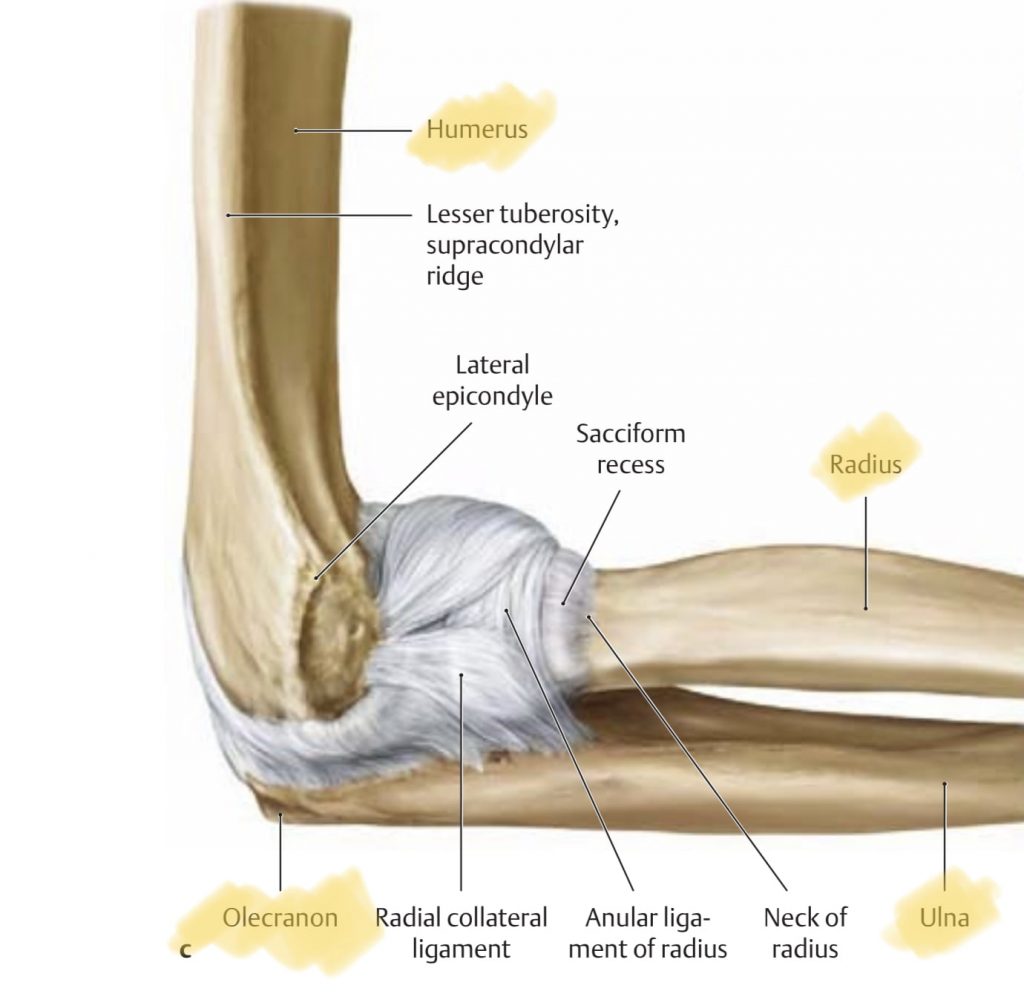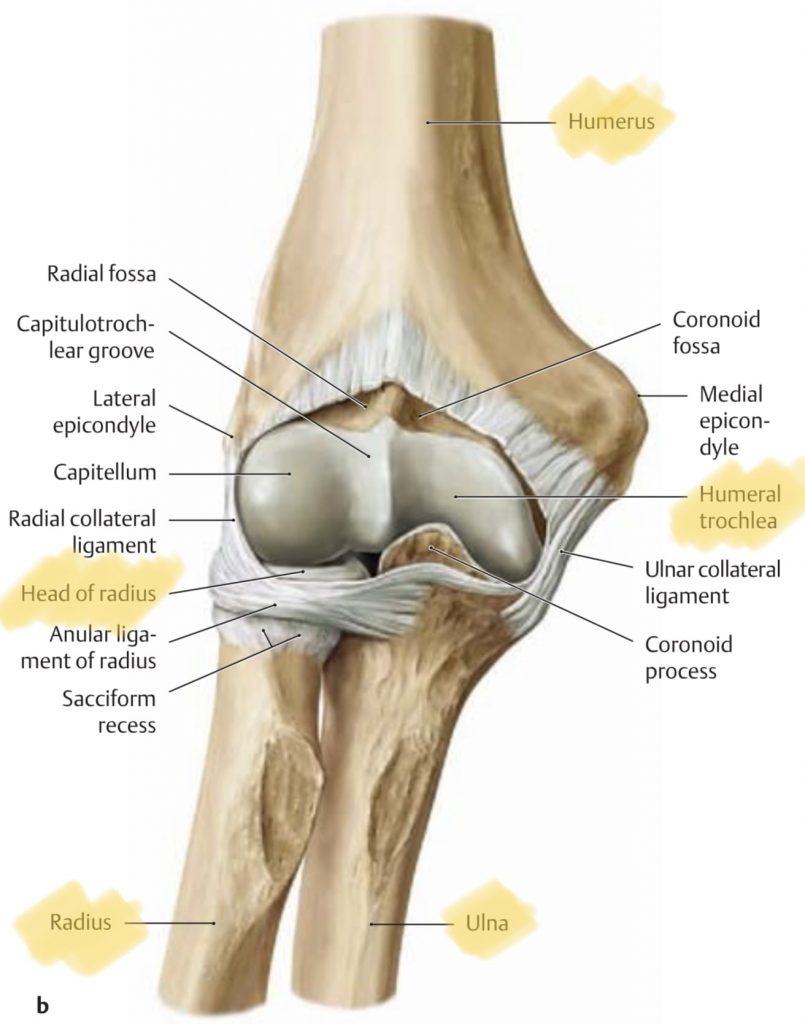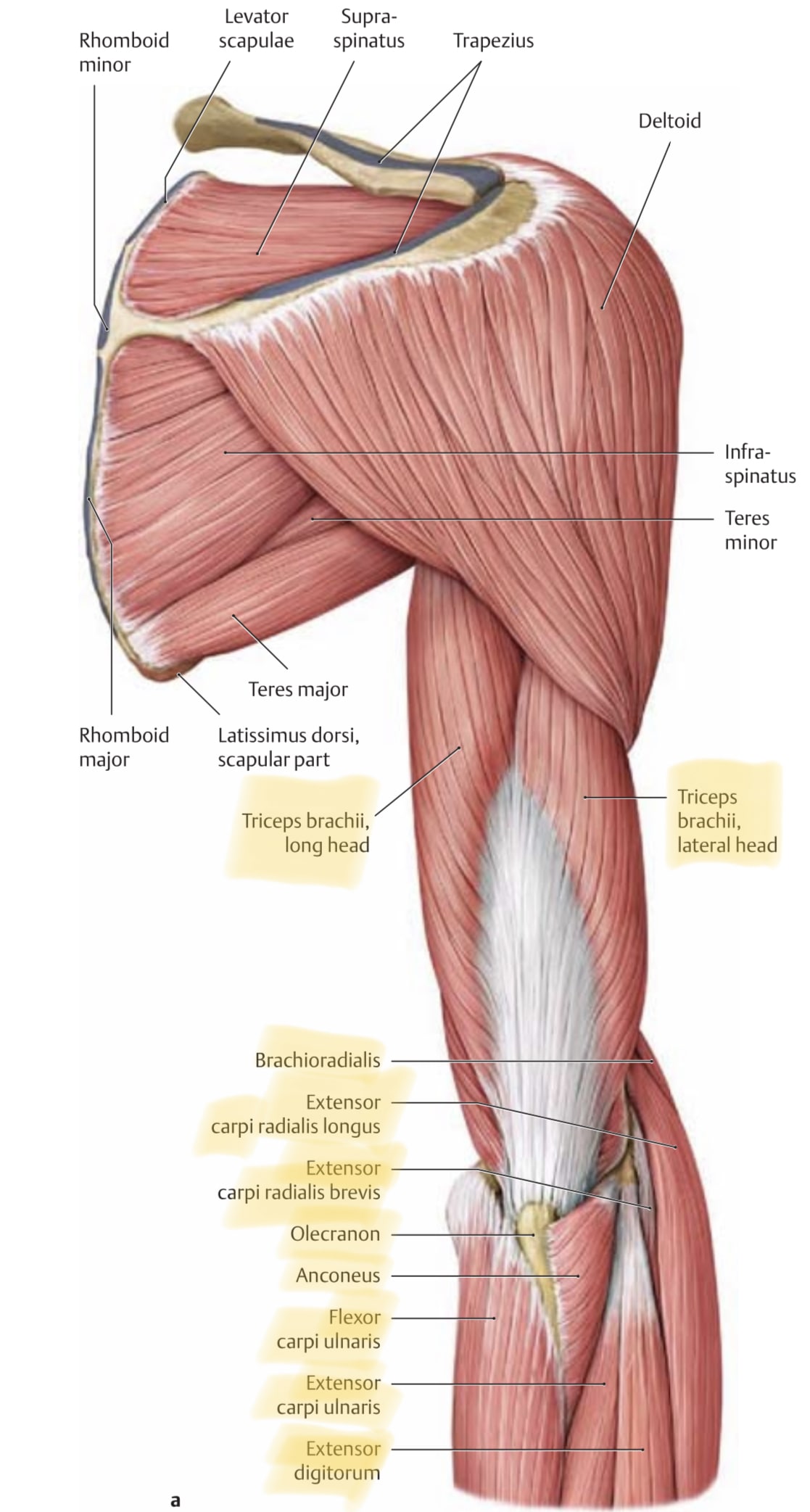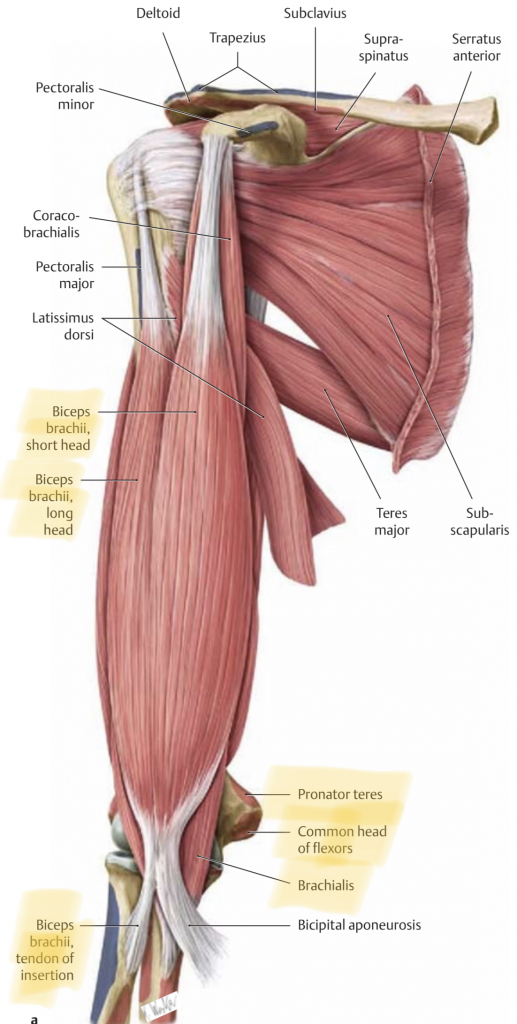You should adapt the number of repetitions of your elbow exercises to your goals. For regular strength training the repetition-range is from 4-50 repetitions. And for climbing-specific exercises anywhere from 1-50.
In this blog, I first discuss the elbow anatomy and the muscles in the area. Whereafter, I dive into exactly the number of repetitions you should do when strength training a healthy or injured elbow and how to do so for climbing-specific exercises.
1. Elbow Anatomy
The elbow consists of 3 bones, the humerus, the radius, and the ulna. They interconnect through 3 joints, which are the humeral-radial joint, the humeral-ulnar joint, and the proximal radio-ulnar joint. There’s a distal radio-ulnar joint as well. That’s where the ulnar and radius connect in the wrist.

There are 4 movement directions in the elbow, flexion, extension, pronation, and supination. In this, the humero-ulnar is a hinge joint like the hinges on your door, which only allows for flexion and extension. The humeroradial joint is a ball and socket joint. Normally a ball and socket joint would allow for movements in all directions, like the shoulder or hip, but in the case of the humeroradial joint, it’s different. As things go, the radius is connected to the ulna through the annular ligament because the ulnar bone is slipped into a notch in the humerus. Thus, the radius can twist around the ulna which is called pronation and supination. And the ulna and radius can move like a hinge relative to the humerus, which results in flexion and extension.

2. Which Muscles Belong to the Elbow?
There is a bunch of muscles around the elbow. Many connect two, three, or even more than three joints. Either the elbow and the shoulder, or the elbow and the wrist, and possibly all the mid/hand joints and the fingers consecutively. If you consider this, it becomes obvious how closely the upper limb interrelates and this is why I always look at all the joints, from the neck, the thoracic spine, and the scapula to the wrist and fingers when I’m assessing complaints of the elbow.
Here’s a list of all the muscles belonging to the elbow. I’ve added all 16 of them and their respective actions so that you get an idea of the complexity of the region:
- Biceps brachii: bends the elbow and flexes the shoulder
- Triceps brachii: extends the elbow and retroflexes the shoulder
- Brachialis: bends the elbow
- Supinator: supinates the lower arm and extends the elbow
- Pronator teres: pronates the lower arm and bends the elbow
- Anconeus: extends the elbow and tightens the joint capsule
- Brachioradialis: bends the elbow and extends and radially deviates the wrist
- Extensor carpi radialis brevis: bends the elbow and extends and radially deviates the wrist
- Extensor carpi radialis longus: bends the elbow and extends and radially deviates the wrist
- Extensor digitorum: extension of the wrist and extends all the fingers except for the thumb
- Extensor digiti minimi: extension and ulnar abduction of the wrist and extends and abducts the pinky finger
- Extensor carpi ulnaris: ulnar deviation and extension of the wrist
- Flexor digitorum superficialis: bends the elbow and bends the wrist and fingers
- Flexor carpi radialis: bends the wrist and radially deviates the hand
- Flexor carpi ulnaris: ulnar deviation and bends the wrist
- Palmaris longus: bends the elbow, bends the wrist, and tightens the palmar aponeurosis for gripping


Now that you know how many muscles there are around your elbow, have a look at your elbow.
Would you have guessed that 16 muscles are passing through this small area?
Except for the triceps and biceps, which are the strong flexor and extensor of the elbow, all the other elbow muscles are relatively weak. This information determines which rep-ranges are relevant for your elbow exercises.
3. How Many Repetitions Should You Do for Your Elbow Exercises?
Before I tell you exactly which rep ranges are best for your elbow, it’s important to make a distinction between a healthy elbow and an injured elbow. And between regular strength training and climbing-specific training.
Let’s start with the healthy elbow.
For regular strength training:
- Flexion and extension-based exercises you can train all rep-ranges. From endurance, 30-50 repetitions, to hypertrophy, 8-12 repetitions, to maximum strength 4-6 repetitions.
- For all the exercises which involve the elbow and the wrist and thus smaller muscles, I don’t see any point in training below 8-12 repetitions for hypertrophy. If you want to develop max strength in these muscles, which is important for climbing, of course, it’s best to do so with climbing-specific exercises.
For climbing-specific exercises:
- Hang board: train endurance with repeaters doing for example 3 rounds of 5x7second hangs with a 3-second break between repeats and 3-5 minute breaks between sets. Or train max strength anywhere from 5-15 seconds with 3-5 minute breaks between hangs.
- Campus board: for absolute power 1-3 moves with at least 5-minute breaks between sets. Or power endurance by doing up to 10 moves, also with at least 5-minute breaks between sets.
- On the wall: for max strength 3-5×3-6 hard moves close to or at your limit with 3-5 minute rest between sets. For endurance do 30-50 moves continuously on different boulder problems or on a regular sport route without resting on good holds.
And finally, let’s see how many repetitions you can use to train an injured elbow.
But obviously, not before you know exactly which structure is injured. If it’s a muscle, have a look at the list of muscles and movements above so that you know exactly how to load it. If it’s another structure, you might need to wait more or less time until you can start training. In any case, you should talk to a professional to get a tailored rehab plan.
Still, here are some general recommendations. First for regular strength training:
- Start with low intensity, while doing 3×20-30 repetitions staying far away from failure
- Then move down in steps of 5 repetitions while you increase the resistance each time you can do the previous rep-range without any irritation after the exercise (light pain allowed but has to subside right after you stop the exercise)
For climbing-specific training:
- Submaximal hangs at 10%, then 20%, then 30% of your max intensity. Increase according to the no-irritation rule I mentioned above. Do 10x10seconds with 50-second breaks.
- When this is easy move onto 3x10second hangs with 3-minute rests with a little discomfort at the injury site.
- Then move onto a regular hang board protocol
If you want to know how much rest and which intensity is best for each repetition range read my blog about strength training for rock climbing. And read the article about the periodization of strength training for rock climbing to get a better idea of how to plan your training plan.
